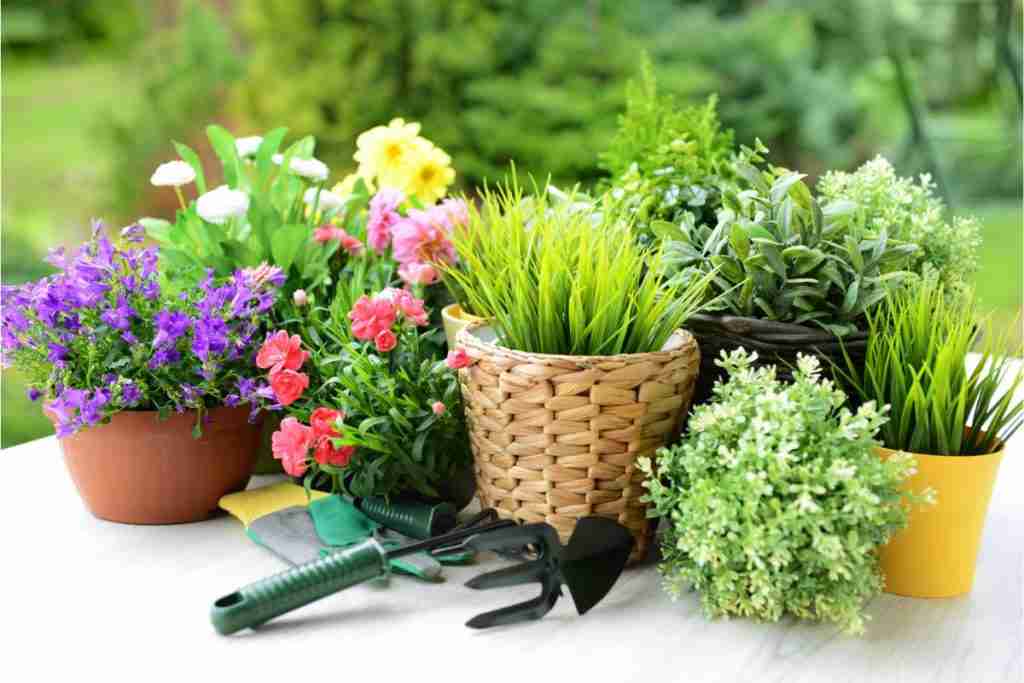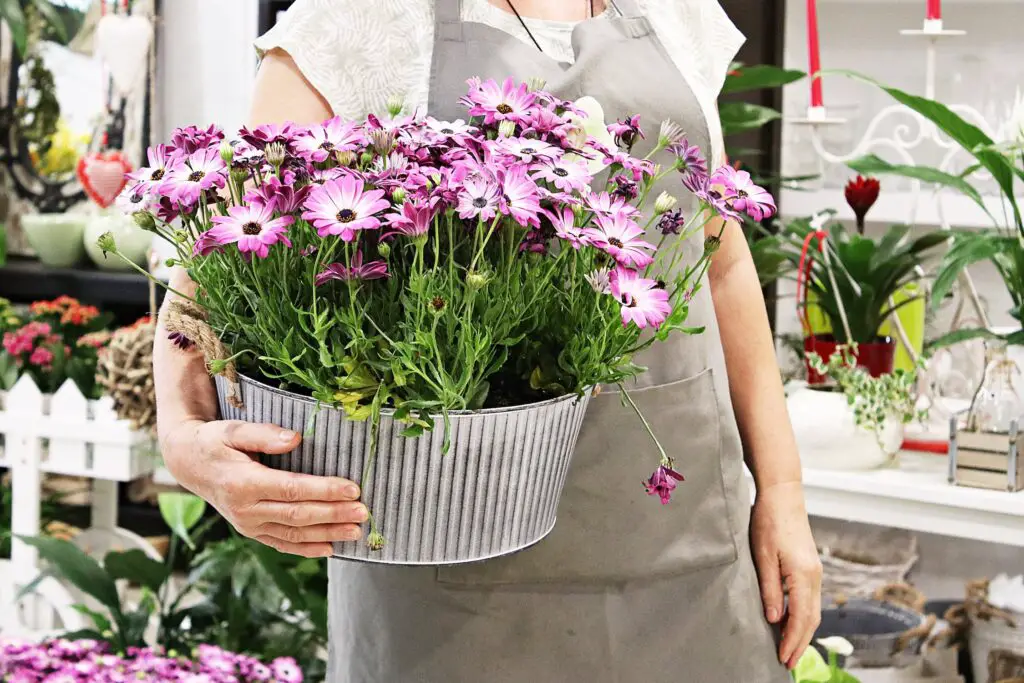African daisies, scientifically known as Dimorphotheca, are beautiful flowering plants that are native to South Africa. They are commonly grown as garden plants, but they can also be grown as houseplants. With their vibrant colors and easy-to-grow nature, African daisies can make an excellent addition to any home or apartment.
In this article, we will discuss everything you need to know about African daisies as houseplants, including their care requirements, propagation methods, and some common problems you might encounter when growing them indoors.
Table of Contents
Plant Description
African daisies are members of the Asteraceae family, which includes other popular garden plants such as daisies, sunflowers, and marigolds. They are herbaceous perennials that can grow up to 3 feet (0.9 metres) tall in their natural habitat, but usually stay much shorter when grown as houseplants.
Their leaves are typically green and can be toothed or lobed, depending on the variety. African daisies produce flowers in a range of colours, including yellow, orange, pink, and purple. The flowers are daisy-like with a central disk surrounded by petals, and they can bloom for several months in the right conditions.
African daisies are known for their tolerance to heat and drought, which makes them well-suited for indoor growing. They are also relatively easy to care for and can be grown from seeds or cuttings.
Growing Requirements
Light
African daisies require bright, indirect light to grow well. They do best when placed near a window that receives at least 4-6 hours of sunlight per day. However, they should be protected from direct sunlight, as this can scorch their leaves and flowers.
If you don’t have a sunny window, you can supplement their light with artificial grow lights. Place the lights about 6-12 inches (25-30 centimeters) above the plant and keep them on for 12-14 hours per day.
Temperature
African daisies prefer warm temperatures between 60-75°F (15-24°C). They can tolerate slightly cooler temperatures, but they may not grow as quickly or produce as many flowers. Avoid placing them in areas with cold drafts or extreme temperature fluctuations, such as near heating or cooling vents.
Humidity
African daisies do not require high humidity levels, but they may benefit from occasional misting with a spray bottle. This can help prevent their leaves from drying out and also provide some extra moisture to the air around the plant.
Soil
African daisies prefer well-draining soil that is rich in organic matter. You can use a commercial potting mix that is formulated for flowering plants or make your own mix by combining equal parts of peat moss, perlite, and vermiculite.
Watering
African daisies should be watered when the top inch of soil feels dry to the touch. Avoid overwatering, as this can cause the roots to rot and lead to other problems. When you water, be sure to saturate the soil thoroughly and allow any excess water to drain out of the bottom of the pot.
Fertiliser
African daisies can benefit from regular fertilisation during their growing season, which typically runs from spring through fall (autumn). You can use a balanced fertiliser, such as a 10-10-10 or 20-20-20 formula, and apply it every two to three weeks. Be sure to follow the manufacturer’s instructions for application rates.
Propagation
African daisies can be propagated from seeds or cuttings. Here’s how to do it:
Seeds
- Fill a small pot with well-draining potting mix.
- Sow the seeds on the surface of the soil and cover them lightly with more soil.
- Water the soil gently to keep it moist, but not soaked.
- Place the pot in a warm, bright location that receives indirect light.
- Keep the soil moist until the seeds germinate, which can take anywhere from 7 to 21 days.
Once the seedlings have developed their first set of true leaves, you can transplant them into larger pots or directly into the garden.
Cuttings
- Take a stem cutting that is about 3-4 inches (7-10 centimetres) long, making sure to include at least one node (where the leaves attach to the stem).
- Remove the leaves from the lower half of the cutting and dip the cut end in rooting hormone powder.
- Fill a small pot with well-draining potting mix and make a hole in the center.
- Insert the cutting into the hole and gently press the soil around it.
- Water the soil thoroughly and cover the pot with a plastic bag to create a mini greenhouse.
- Place the pot in a bright, warm location that receives indirect light.
- Check the soil regularly to make sure it stays moist, and remove the plastic bag once the cutting has rooted and new growth appears.



Common Problems
Like any houseplant, African daisies can be susceptible to a variety of problems. Here are a few common ones you might encounter:
- Pest infestations: African daisies can attract pests such as aphids, spider mites, and thrips. These can be treated with insecticidal soap or neem oil.
- Fungal diseases: Overwatering or poor air circulation can lead to fungal diseases such as root rot or powdery mildew. These can be prevented by providing good drainage and proper air circulation.
- Wilting: If your African daisy is wilting, it may be a sign that it needs water or that it has been overwatered. Check the soil moisture level and adjust your watering accordingly.
- Leggy growth: If your African daisy is growing tall and leggy, it may not be receiving enough light. Move it to a brighter location or supplement its light with artificial grow lights.
Conclusion
African daisies can be a beautiful and easy-to-grow houseplant. With their vibrant colors and tolerance for heat and drought, they can add a pop of color to any room in your home. Just be sure to provide them with plenty of bright, indirect light, well-draining soil, and proper watering and fertilization. With a little bit of care, your African daisy can thrive and brighten up your space for months to come.

